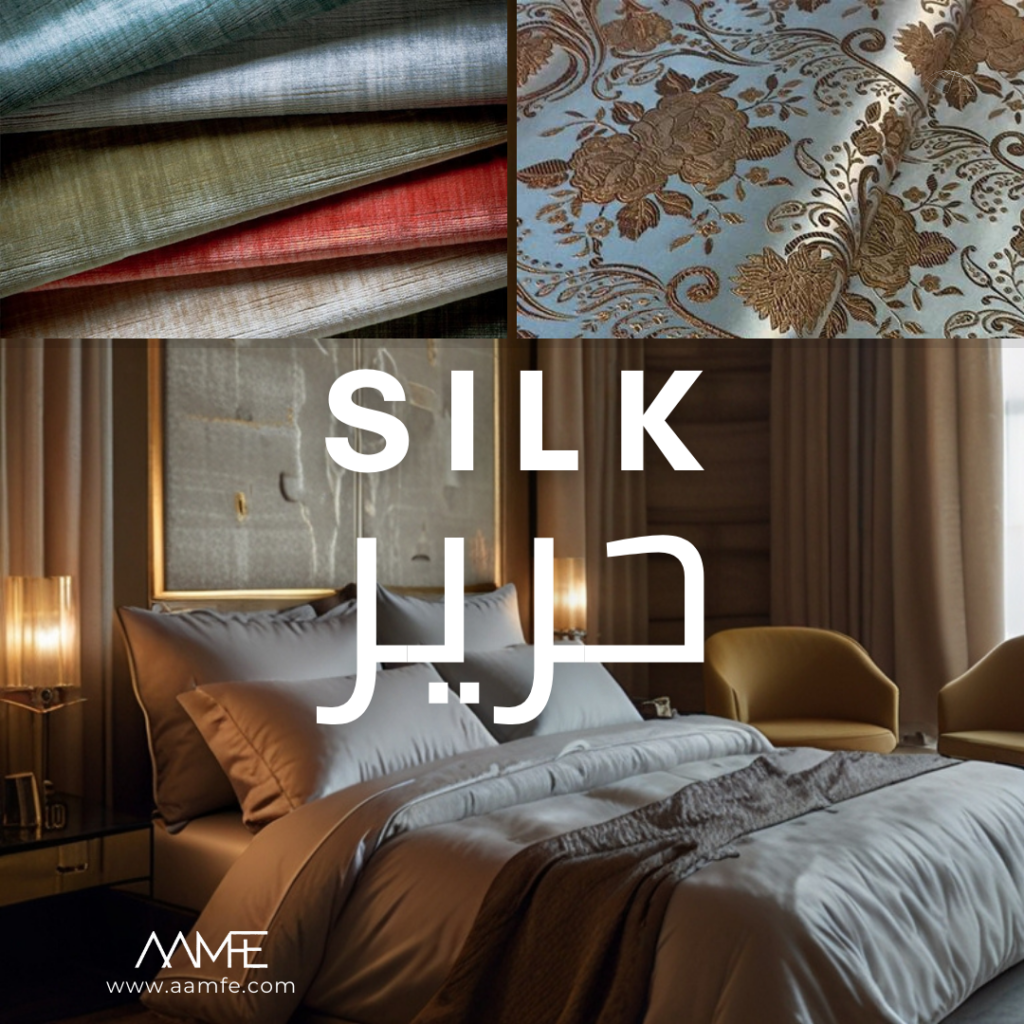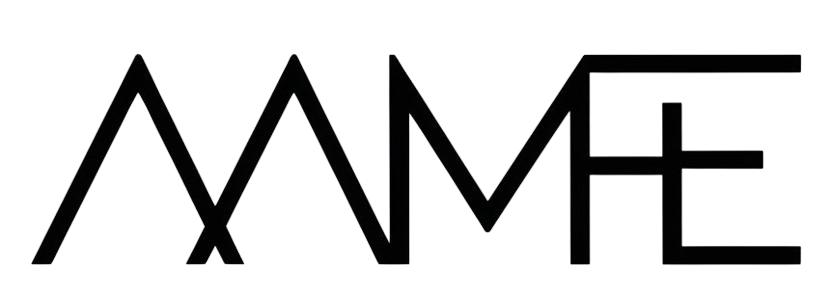In the UAE, the fabric trends for interior design are evolving, embracing both luxurious and practical elements to cater to the diverse needs of homeowners. From the plush elegance of velvet to the intricate details of jacquard, each fabric brings its own set of characteristics that can enhance the aesthetics and comfort of a space. This guide explores specific trending fabrics, their advantages, disadvantages, and ideal uses, helping you make informed choices for your home.
1. Velvet
Velvet is synonymous with luxury and elegance. Its rich texture and vibrant colors make it a popular choice for creating opulent interiors.
Advantages:
Velvet’s soft, plush texture is visually appealing and comfortable. It adds a rich, luxurious feel to any room and is available in a variety of colors, making it versatile for different decor styles.
Disadvantages:
Velvet can be difficult to maintain as it easily shows dust, lint, and pet hair. It can also be prone to staining and requires careful cleaning.
Ideal Uses:
Best suited for formal living rooms, bedrooms, and accent pieces like cushions or ottomans.
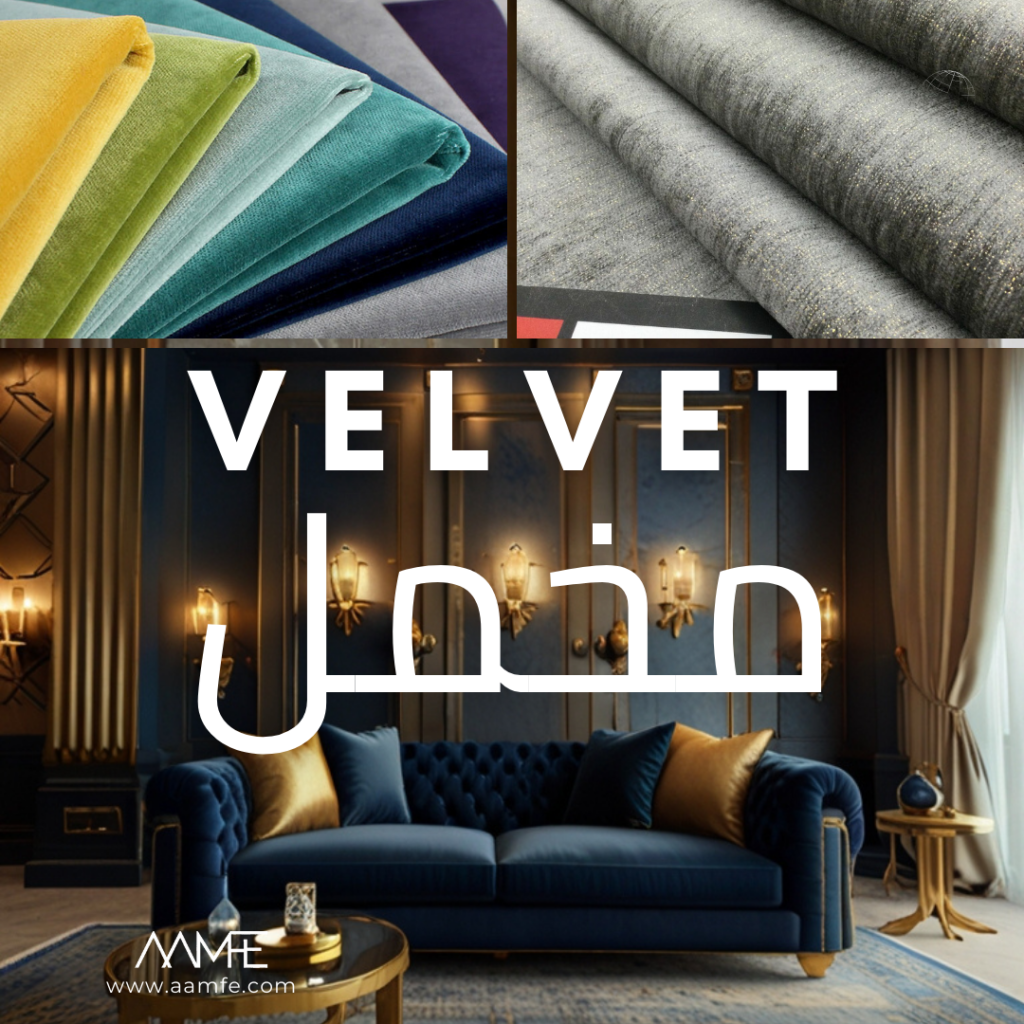
2. Jacquard
Jacquard fabrics are known for their intricate woven patterns, often depicting floral or geometric designs. This fabric is both durable and decorative
Advantages:
Jacquard is highly durable and resistant to wear, making it suitable for high-traffic areas. The intricate patterns add a decorative element without the need for additional accessories.
Disadvantages:
It can be heavier and more expensive than other fabrics. The complexity of the weave can make it challenging to clean and maintain.
Ideal Uses:
Ideal for upholstery, drapery, and bedspreads, adding a touch of elegance and sophistication to any room.
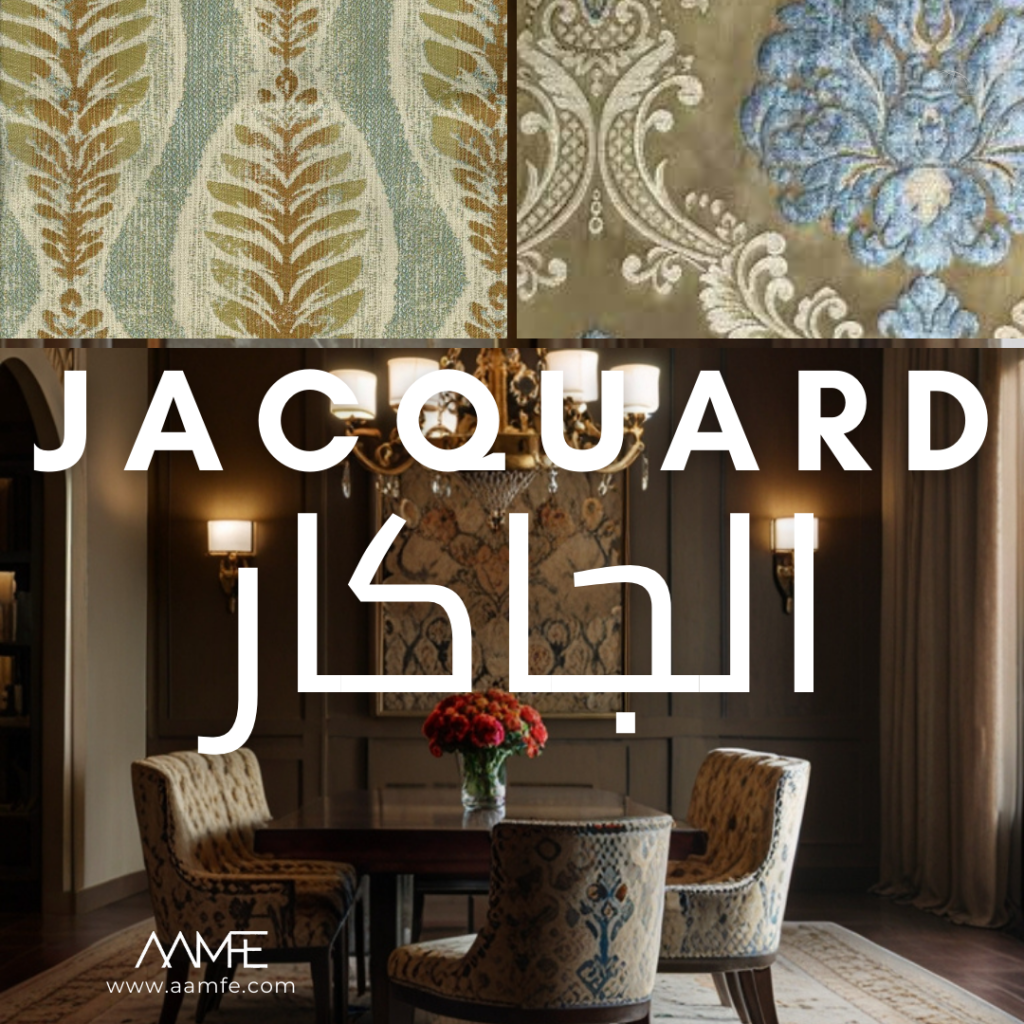
3. Chenille
Chenille is a soft, textured fabric with a velvety surface, often used for both modern and traditional interiors.
Advantages:
Chenille is soft and comfortable, with a luxurious feel. It is durable and can withstand everyday wear and tear, making it a practical choice for families.
Disadvantages:
Chenille can attract dust and is susceptible to stretching. It may require regular maintenance to keep it looking its best.
Ideal Uses:
Perfect for sofas, chairs, and cushions, adding a cozy and inviting texture to living spaces.
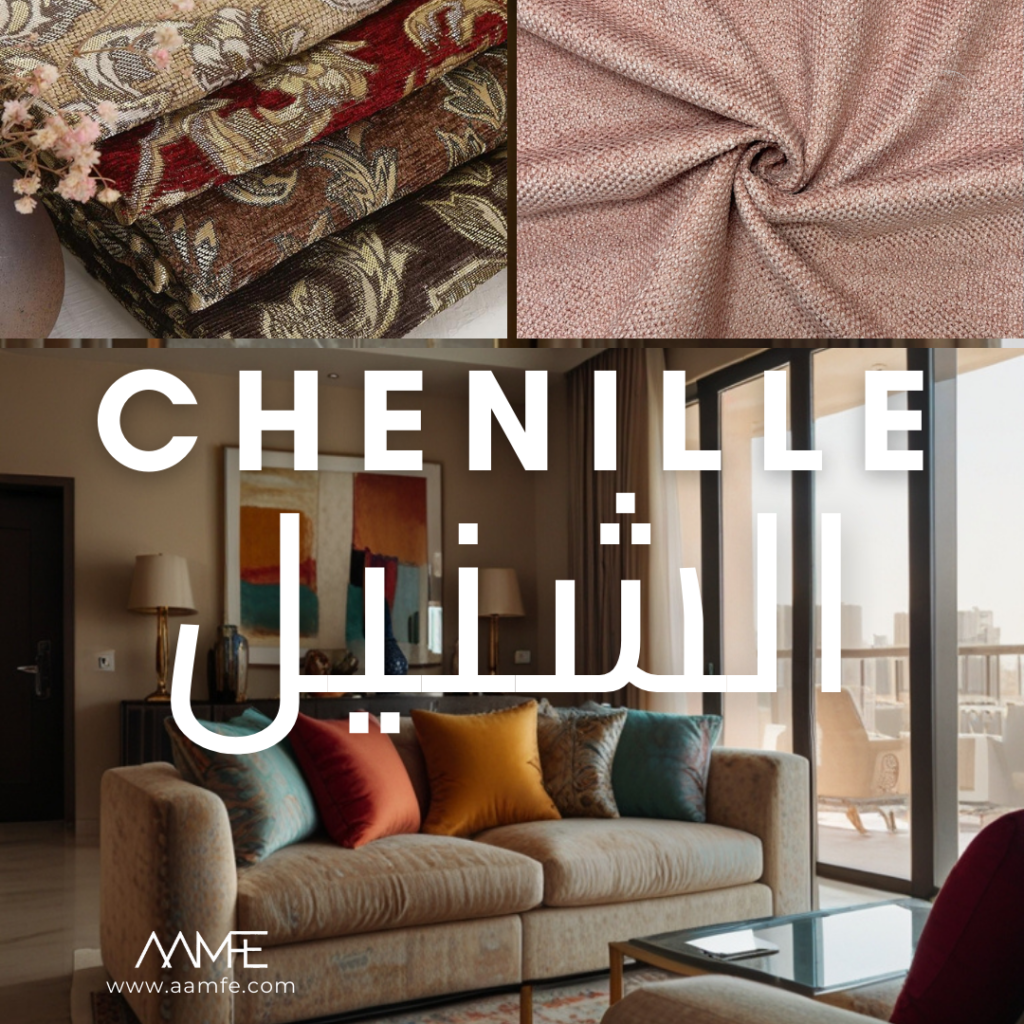
4. Linen
Linen is a lightweight, breathable fabric, ideal for the warm climate of the UAE. It has a natural, textured appearance that adds a casual elegance to interiors.
Advantages:
Linen is highly breathable and comfortable, making it ideal for hot climates. It is durable, hypoallergenic, and has a natural, elegant drape.
Disadvantages:
Linen wrinkles easily and may require frequent ironing. It can also be less durable under heavy use compared to other fabrics.
Ideal Uses:
Excellent for curtains, light upholstery, and summer bedding, offering a fresh and airy feel.
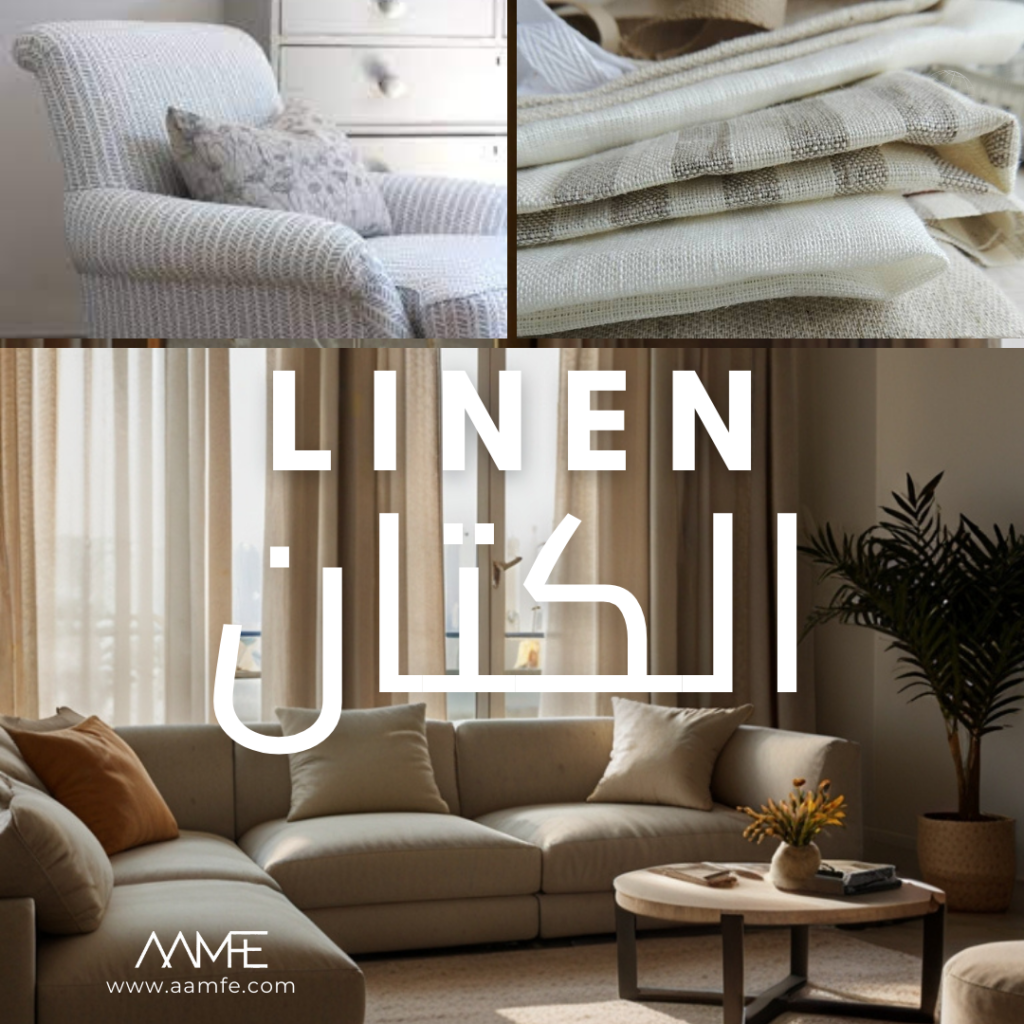
5. Silk
Silk is a natural fiber known for its sheen and luxurious feel. It is often used in high-end interiors to add a touch of sophistication and elegance.
Advantages:
Silk has a beautiful, natural sheen and is available in a wide range of colors. It is lightweight and drapes elegantly, adding a luxurious touch to interiors.
Disadvantages:
Silk is delicate and can be easily damaged by sunlight and moisture. It requires special care and maintenance.
Ideal Uses:
Best used for decorative elements like cushions, curtains, and throws, or in bedrooms for an opulent touch.
